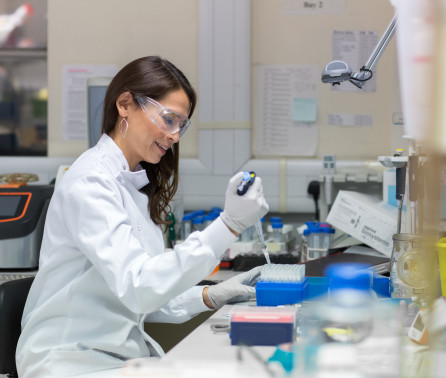BibTex format
@article{Miglietta:2021:10.3389/fmolb.2021.775299,
author = {Miglietta, L and Moniri, A and Pennisi, I and Malpartida-Cardenas, K and Abbas, H and Hill-Cawthorne, K and Bolt, F and Jauneikaite, E and Davies, F and Holmes, A and Georgiou, P and Rodriguez, Manzano J},
doi = {10.3389/fmolb.2021.775299},
journal = {Frontiers in Molecular Biosciences},
pages = {1--11},
title = {Coupling machine learning and high throughput multiplex digital PCR enables accurate detection of carbapenem-resistant genes in clinical isolates},
url = {http://dx.doi.org/10.3389/fmolb.2021.775299},
volume = {8},
year = {2021}
}
RIS format (EndNote, RefMan)
TY - JOUR
AB - Rapid and accurate identification of patients colonised with carbapenemase-producing organisms (CPOs) is essential to adopt prompt prevention measures to reduce the risk of transmission. Recent studies have demonstrated the ability to combine machine learning (ML) algorithms with real-time digital PCR (dPCR) instruments to increase classification accuracy of multiplex PCR assays when using synthetic DNA templates. We sought to determine if this novel methodology could be applied to improve identification of the five major carbapenem-resistant genes in clinical CPO-isolates, which would represent a leap forward in the use of PCR-based data-driven diagnostics for clinical applications. We collected 3 clinical isolates (including 221 CPO-positive samples) and developed a novel 5-plex PCR assay for detection of blaIMP, blaKPC, blaNDM, blaOXA-48 and blaVIM. Combining the recently reported ML method ‘Amplification and Melting Curve Analysis’ (AMCA) with the abovementioned multiplex assay, we assessed the performance of the AMCA methodology in detecting these genes. The improved classification accuracy of AMCA relies on the usage of real-time data from a single fluorescent channel and benefits from the kinetic/thermodynamic information encoded in the thousands of amplification events produced by high throughput real-time dPCR. The 5-plex showed a lower limit of detection of 10 DNA copies per reaction for each primer set and no cross-reactivity with other carbapenemase genes. The AMCA classifier demonstrated excellentpredictive performance with 99.6% (CI 97.8-99.9%) accuracy (only one misclassified sample out of the 253, with a total of 160,041 positive amplification events), which represents a 7.9% increase (p value < 0.05) compared to conventional melting curve analysis. This work demonstrates the use of the AMCA method to increase the throughput and performance of state-of-the-art molecular diagnostic platforms, without hardware modifications and additiona
AU - Miglietta,L
AU - Moniri,A
AU - Pennisi,I
AU - Malpartida-Cardenas,K
AU - Abbas,H
AU - Hill-Cawthorne,K
AU - Bolt,F
AU - Jauneikaite,E
AU - Davies,F
AU - Holmes,A
AU - Georgiou,P
AU - Rodriguez,Manzano J
DO - 10.3389/fmolb.2021.775299
EP - 11
PY - 2021///
SN - 2296-889X
SP - 1
TI - Coupling machine learning and high throughput multiplex digital PCR enables accurate detection of carbapenem-resistant genes in clinical isolates
T2 - Frontiers in Molecular Biosciences
UR - http://dx.doi.org/10.3389/fmolb.2021.775299
UR - https://www.frontiersin.org/articles/10.3389/fmolb.2021.775299/full
UR - http://hdl.handle.net/10044/1/92814
VL - 8
ER -
